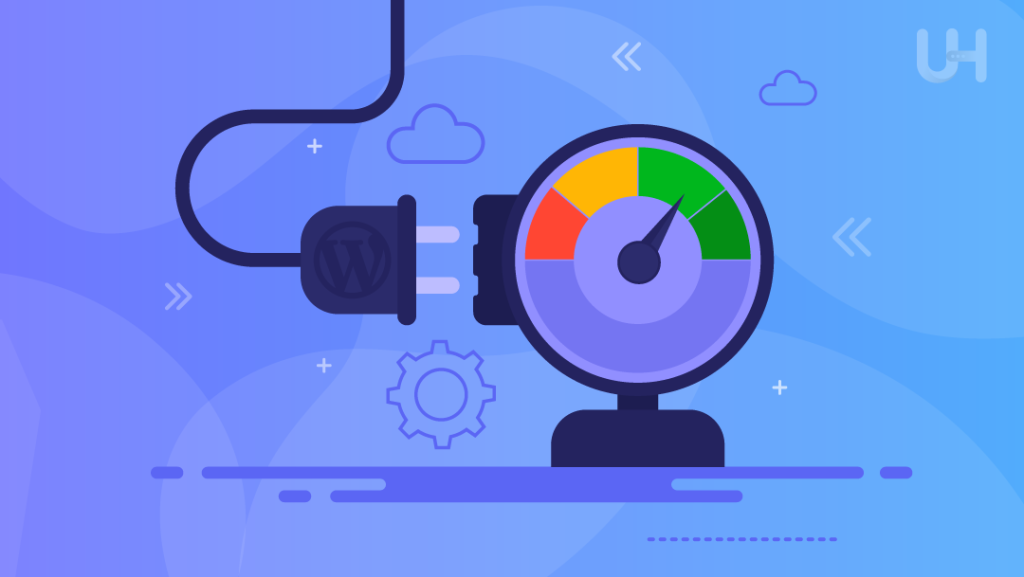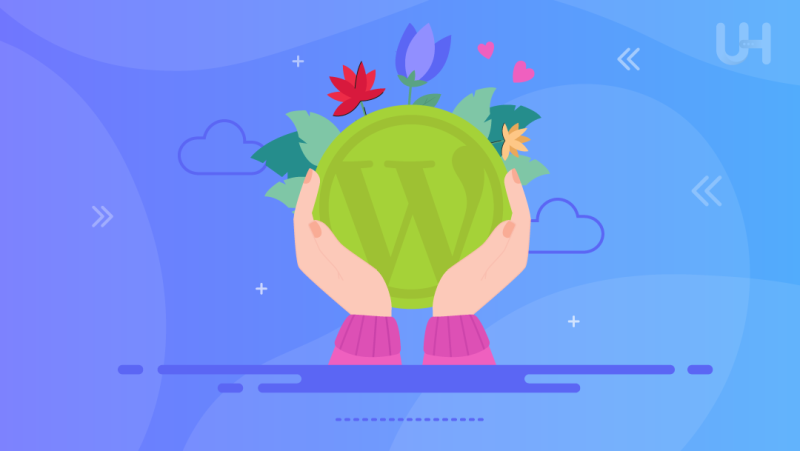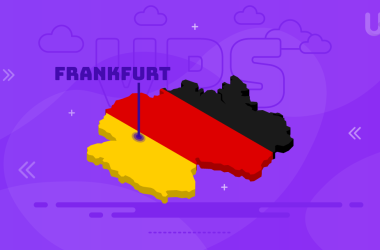What do you think is the most responsible for global carbon emissions? Maybe the big factories of Boeing and Airbus? Or maybe airports? Shopping malls? You will probably be surprised, but the Internet is the highest energy consumption source of our time. There are millions of websites where you look for entertainment, information, or shopping in everyday life and each of them leaves a carbon footprint.
More than half of the websites run on WordPress, and over 30% of eCommerce stores are on WooCommerce. However, our planet is not doing well. Everyone has a responsibility to the Earth and future generations. In this article, I will try to show you how you can make websites greener using WordPress and contribute to creating a better planet.
Internet’s Carbon Footprint
Now that the first shock has worn off, I think you’re slowly starting to understand. Half of humanity is online right now and using data. They have a computer with a power-consuming graphics card turned on, listen to music, and probably the light is turned on. And that’s not all! The website uses the entire transmission infrastructure – large data centers.
So if you thought the Internet is eco-friendly because it saves the materials and time-consuming production of books, catalogs, or DVDs and fuel for shopping trips or meetings with friends, I must disappoint you. All data centers’ infrastructure requires state-of-the-art equipment, expensive maintenance, and logistics that burn far more fuel than book production or private cars and left a significant carbon footprint.
The exchange of information in the network has become so huge that it requires a lot of electricity and fuel. If the Internet were a country, it would be the third most used electricity behind the US and China – and the trend is growing fast.
Sadly, we overlook this consumption of resources when using the Internet and its environmental impact on the world. Everyone notices a smoking chimney or smelly exhaust and knows that something needs to be done about this pollution. On the other hand, a computer or smartphone is quiet, noiseless, and clean. Unfortunately, appearances are deceiving.
With the increasing use of cloud computing, video streaming, and more and more extensive websites, the “consumption” of digital technologies continues to grow, all in silence. Only our planet cries out for help more and more.

What can you, a blogger or entrepreneur, do to reduce your data usage? As an owner of a business or a creator of content on the Internet, you can try to make individual websites as eco-friendly as possible.
How to make your website green?
It may seem that it is best to hire an agency to build a website tailored to your needs. But not all WordPress users can or want to afford it, and not all WordPress agencies have a clue about a sustainable web manifesto. But with simple means, you can take care of the world by making it green.
Start with planning the homepage and developing its layout, content, and buttons. All this takes work and consumes resources, but you can make it more eco-friendly by rethinking its elements and making the user not feel lost in it. If they find what they are looking for faster, they will spend less time on it.
Remember that sustainability is a multidimensional issue. For example: if you ship your parcels in an environment-neutral manner, that is the right direction. However, if you went to the courier with a large SUV, we call such activities “greenwashing” because it is not consistent.
An eco-friendly concept for your WordPress site
WordPress is one of the greener and more eco-friendly CMS. But even so, it can be a voracious data monster, which is why well-thought-out structural website design is so important.
Will the navigation on your website be so well thought out that users will find it quickly and reach the information they are looking for with just a few clicks? Or do they wander from one side to the other until they finally reach their destination and waste their time and energy?
Your goal is to build a simple structure to help users find what they are looking for with as few clicks as possible and in the shortest possible time. Each additionally loaded subpage is an unnecessary data transfer that consumes energy.
However, as you already know, a well-thought-out structure improves indexing in search engines. Google Bots love well-structured websites and will reward you with a better ranking. Complicated navigation is one of the biggest mistakes on a website.
Sustainable Hosting
Choosing eco-friendly hosting is one of the most critical elements of your sustainability strategy. Once the design is ready, you need to find a server that will give life to your site. Every time visiting your website, a user’s computer exchanges the data with a server which costs energy and increases emissions.
When choosing the right hosting, you need to consider not only the energy efficiency of the servers but also their source of electrical power. Choose hosting providers that locate their data center in an area powered by green or renewable energy, such as hydro, wind, or solar power plants. It will reduce environmental impact.
Hosting service providers need a lot of resources for technical infrastructure, office materials, equipment, and logistics. Even the food served in the canteen, how business trips take place and what kind of furniture it uses matters. It is crucial to check if the provider is truly eco-friendly and does not just pretend to be. If you cannot check this aspect, try to analyze its brand philosophy.
Another important aspect is the efficient hosting package. The smoother your website runs, the fewer emissions it generates. Select the offer with modern and fast SSD NVMe and the latest generation hardware. Furthermore, it has to have the current PHP version, free SSL certificate, and HTTP/2 protocol.

Eco-Friendly WordPress plugins
WordPress plugins are both a curse and a blessing. For every problem, there is a solution in the form of a plugin. This way, you can design your site exactly as you want, even without programming knowledge.
However, be very careful when choosing plugins: each time you install a new plugin, think about whether it is necessary. Each additional plugin can unnecessarily load your website. This way, your site will be slow, causing user irritation, poorer search engine results, and environmental strain. So think carefully about which features and effects you need now or will need in the future and install as few plugins as possible.
A sustainable WordPress theme
As with plugins, the choice of WordPress themes that determine the look of your website is vast. Choose the one that meets your needs and has the features you need – and nothing more. The more features integrated into a theme, the larger the code bundle becomes.
WordPress creator Jack Lenox once went to the extreme, creating the Susty theme. This results in a data transfer of only 6 kB. On the other hand, some themes are several MB in size. Indeed, Susty is exceedingly reduced, but other proposals for ecological WordPress themes can save emissions: Twenty Twenty-Two, GeneratePress, Neve, or Hello Elementor.
Photos and videos vs. ecology
Images, videos, and fonts are a big part of your website. If you use large format photos in maximum quality, on the one hand, your website will run slowly, and on the other hand, it will be the complete opposite of ecological operation. Our article on how to speed up WordPress will help you optimize your graphics.
The use of countless different fonts is also problematic. On the one hand, this is an aesthetic and functional problem, and on the other hand, it reduces the site’s performance and increases the burden on the environment. The fewer fonts you use, the fewer data needs to be loaded on each page. The font format is also essential – you will learn what font format is best for a website in our other article.
An eco-friendly WordPress design is well-optimized. It relies on a few fonts in the correct format and deliberately placed, lightweight graphics. You need to think very seriously about videos. It would be best if you omit them. And if the use of a video on the page is necessary, make sure to use as much compression as possible.
Most of the photos on UltaHost.com are under 1500 pixels wide and up to 200 kilobytes in size.
Clean inside your WordPress
Not only a well-designed website structure and well-thought-out navigation are essential. Keep things tidy inside WordPress from the start; uninstall unused plugins, and delete unnecessary images. The cleaner and leaner your WordPress system is, the faster it runs and the greener it is. Even if it is difficult, be consistent and clean your system regularly.
If you do not follow this advice, the number of unnecessary plugins and graphics will increase. It will slow down your site and take up so much disk space that you’ll be forced to do a big cleanup anyway. It is advantageous from a sustainability point of view but also makes sense from an SEO point of view because Google loves clean, neat, and fast websites.

A practical tool for organizing is WP Optimize. When it comes to just cleaning the database, WP DB Cleaner is also very helpful.
SEO and sustainability
Almost anything good for SEO is also favorable for sustainability: clean structures and fast pages with low data transfer. In addition to the actions already mentioned, remove other redundant elements (unused external services and scripts), simplify and compress the source code, and deactivate unnecessary components (e.g., emojis, comment systems, or avatars).
Asset CleanUp plugin may help you. This plugin allows you to specify what code should and should not be loaded for each page. For example, when you run a WooCommerce store, WordPress loads the code on every page – even on blog pages. With the Asset CleanUp tool, you can disable individual code elements on certain pages.
Plugins such as Yoast or Rank Math also help in the optimization. They reveal technical errors, missing images, and broken links and help you fix them.
Is it worth having an ecological website?
Creating an eco-friendly website is a lot of work, but it’s worth it. Even if you are not an eco-geek, creating a sustainable website will pay off because most sustainability activities improve page load times and search engine optimization.
To check how sustainable your website is, you can use the websitecarbon.com service, which provides compelling and descriptive information about the carbon footprint of your WordPress website. The results of website speed tests such as GTMetrix or Google PageSpeed Insights are also very informative. You will not only get an evaluation of your site but also lots of tips on what you can do to perform even better.
An energy-saving website is not only about expenses. If your website loads quickly, your visitors will be happy, which will translate into real money. More speed means better results on Google, more visitors, more conversions, and more earnings.
If you look for an eco-friendly hosting powered with renewable energy, VPS Hosting from UltaHost is the best choice for your business. Get 24/7 support from our support team. Our powered infrastructure focuses on auto-scaling, performance, and security. Let us show you the difference! Check out our plans!










